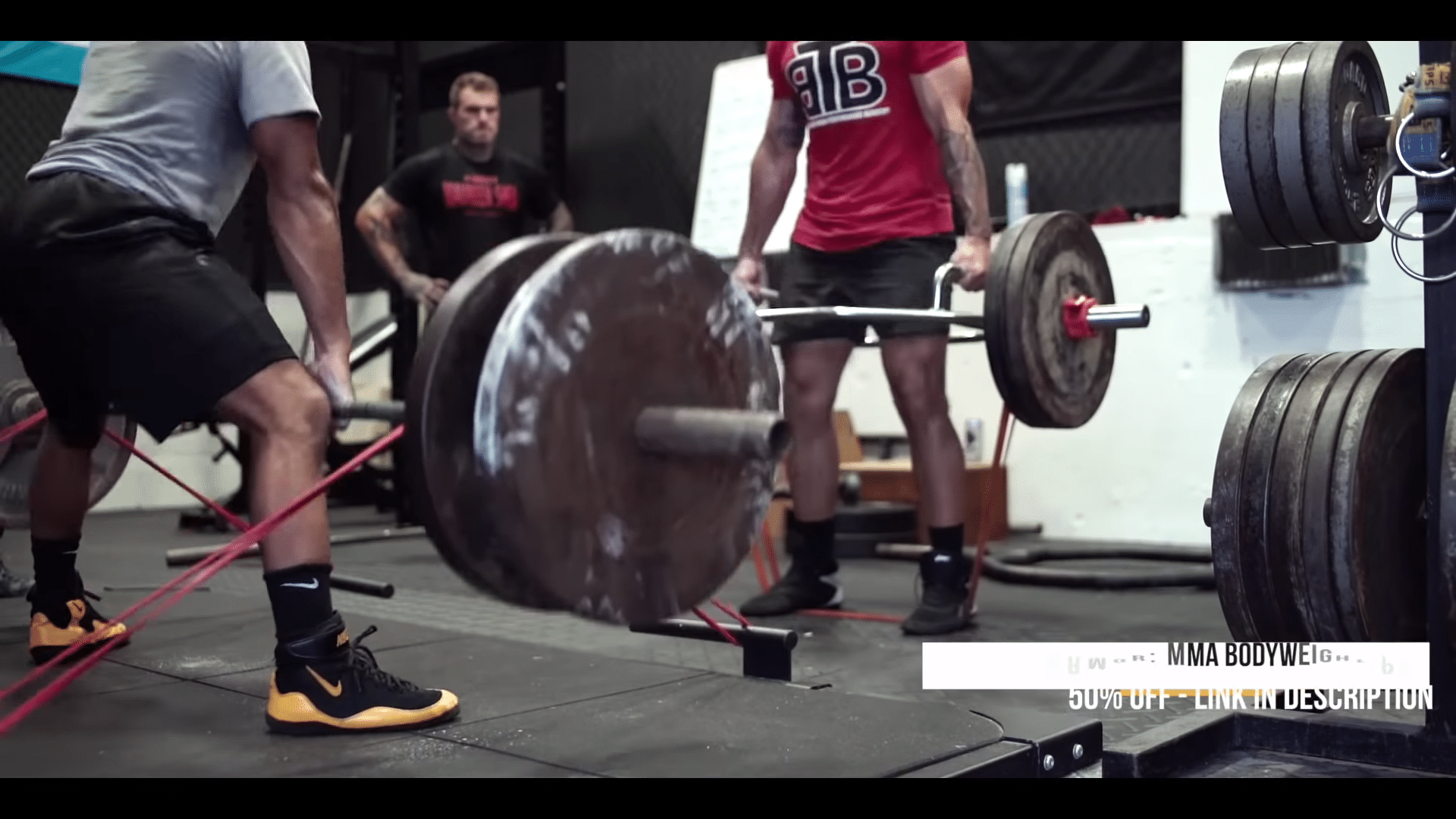- MMA & Combat Sports
The 8 Best Strength and Conditioning Exercises for Boxing
- By Phil Daru
- On June 26, 2021
The 8 Best Strength and Conditioning Exercises for Boxing

Strength and conditioning is to boxing as chocolate syrup is to ice cream. You can get by without it, but you’ll be a lot better off if you have it. And that’s because strength and conditioning can go a long way in increasing your explosive power, movement quality, your gas tank, and your structural integrity.
The question is, what are the best strength and conditioning exercises for boxing?
There are eight exercises I believe are fundamental to an effective strength and conditioning program. They are:
- Close Grip Bench Press
- Trap Bar Deadlifts
- Ballistic Medicine Ball Throws
- Dumbbell Rows
- Band Pull Aparts
- Box Jumps
- Road Work
- Power Endurance Training
Below, I’m going to dive into each of these exercises, why they’re great strength and conditioning exercises for boxing, how to perform them, and how to plug them into your strength and conditioning training.
And these exercises, when programmed properly, will allow you to punch harder, enjoy better cardio, move with more fluidity, and outlast your opponent. Ready to jump in?
Let’s go:
#1 Close Grip Bench Press
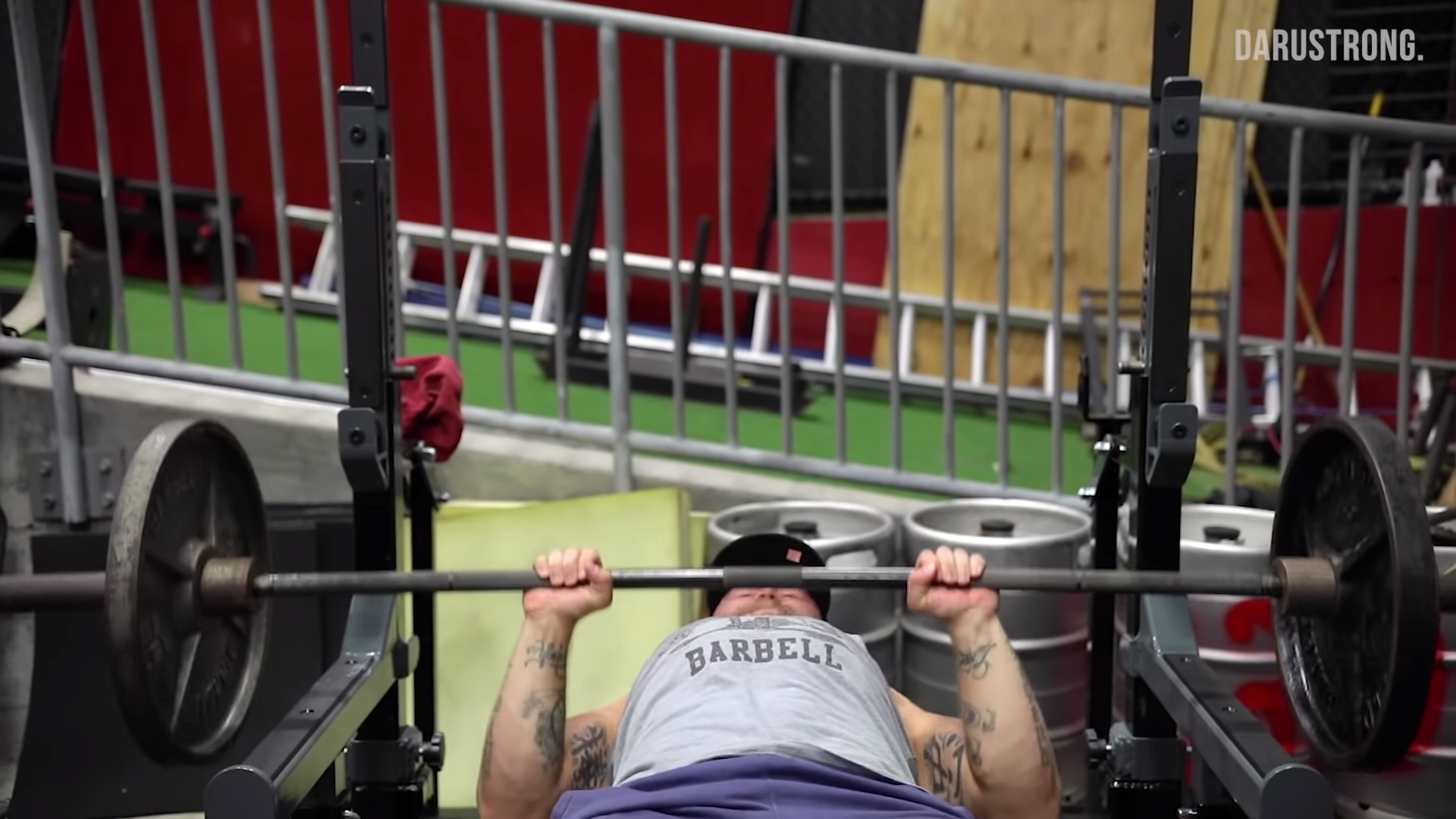
Why It’s Great For Boxing: The close grip bench press is a great strength and conditioning exercise for boxing for multiple reasons. First, it places more emphasis on the triceps. That means it can help you build the strength you need to get full extension on your punches and add a little pop to them. Second, it places less emphasis on the shoulder. This is beneficial because most boxers already have overly tight shoulders due to the demands of the sport. Their constantly rounded forward shoulders create tension in the shoulders that can spark imbalances. In less words, the close grip bench press side-steps overdevelopment of the shoulders.
How to Program It: The close grip bench press is a heavy compound movement and should be used as such. That means you should use low reps (no more than eight) with higher intensities. As far as sets, I like to stay between 3-7 sets. And that depends on the amount of reps you’re performing.
Since the close grip bench press is a compound movement, it should be one of the first exercises you perform in a training program.
How to Perform Close Grip Bench Press:
- Grab a barbell and place the hands shoulder width apart
- Pin the shoulders down and back and unrack the barbell
- Lower the barbell and touch just below the chest in a controlled fashion
- Explode up
- Repeat for desired reps
#2 Trap Bar Deadlift
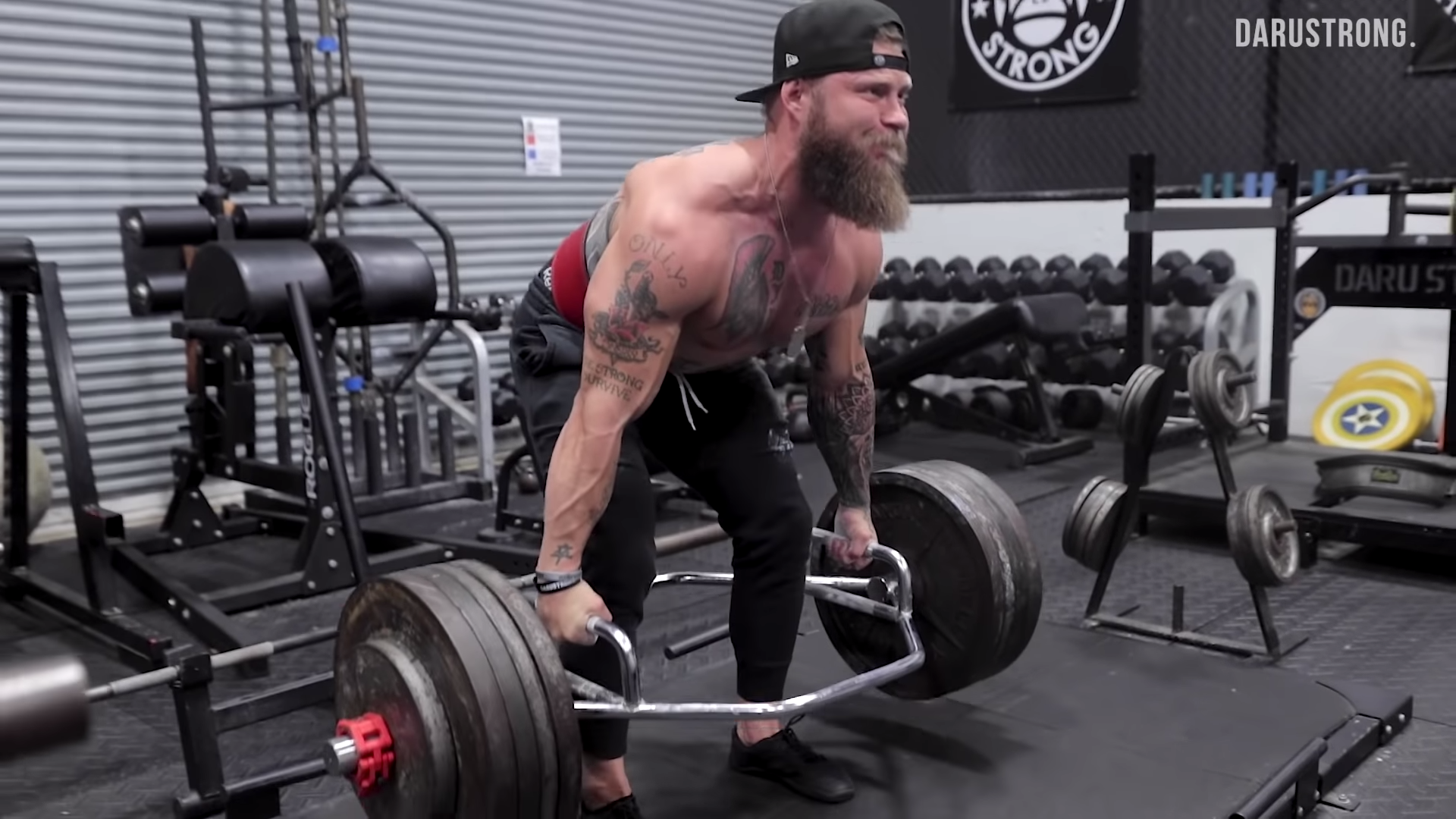
Why Its Great For Boxing: The trap bar deadlift is one of the most accessible movements for all athletes. By that, I mean that the movement doesn’t require a ton of mobility to perform properly. While the squat takes a decent amount of mobility to perform, and some fighters can run into mobility blocks with traditional deadlifts, the trap bar deadlift has a low barrier to entry.
It’s also a great builder of the posterior chain. These are the muscles on the backside of the body that consist of the hamstrings, glutes, low back, , mid back, and upper back, among others. These muscles are usually underdeveloped in most boxers, but greatly contribute to punching power, fluidity, injury prevention, and overall performance.
The trap bar deadlift is also more specific to sport in that athletes move the trap bar faster on average than the squat or traditional deadlift. That makes it a great tool to begin translating strength to power.
How to Program It: Like the close grip bench press, the trap bar deadlift is a heavy compound movement. That means it should be programmed with low reps (again, no more than eight) and high intensities in mind.
How to Perform Trap Bar Deadlift:
- Step into the middle of the trap bar with your feet hip width
- Push the hips back slightly and sink the butt down to grab the middle of the handles
- Pin the shoulders down and back, pick the chest up slightly, and tuck the chin
- Push the floor away from you explosively until you reach lockout
- Push the hips back slightly and sink the butt down in a controlled manner to get the trap bar back down to the floor
#3 Ballistic Medicine Ball Throws
Why They’re Great For Boxing: I love using ballistic medicine ball throws with all of my fighters for multiple reasons. The main reason is that they’re a sport specific movement that build power. That means that the power you’ll build from ballistic medicine ball throws seamlessly translates to your boxing game.
There are many different ballistic medicine ball throws you can use with a variety of different applications. There are medicine ball backwards tosses that build power in the posterior chain, there are medicine ball chest passes that develop hip extension and power in the upper extremities, there are side tosses that develop rotational power.
In less words… There’s a ballistic medicine ball throw for almost any application. Today, I want to focus on the straight arm throw, which can be used to increase punching power:
How to Program Them: My mindset for ballistics is quality over quantity. That means you don’t want to perform tons and tons of ballistic medicine ball throws. You want to perform a handful of them with the utmost quality and intent – intent being the amount of energy and focus you put behind each throw.
How to Perform the Straight Arm Throw:
- Grab a medicine ball and stand square to the wall you’re going to throw the medicine ball at
- If you’re performing the movement on your right side, place your right hand behind the ball, left hand on the left side of the ball to support it
- Load up the hips by pushing them back
- As you load the hips, bring the medicine ball down by your right hip
- Extend the hips and transfer the power generated from the hips through the upper extremity to throw the medicine ball at the wall
- Repeat on both sides for desired reps
#4: Dumbbell Rows
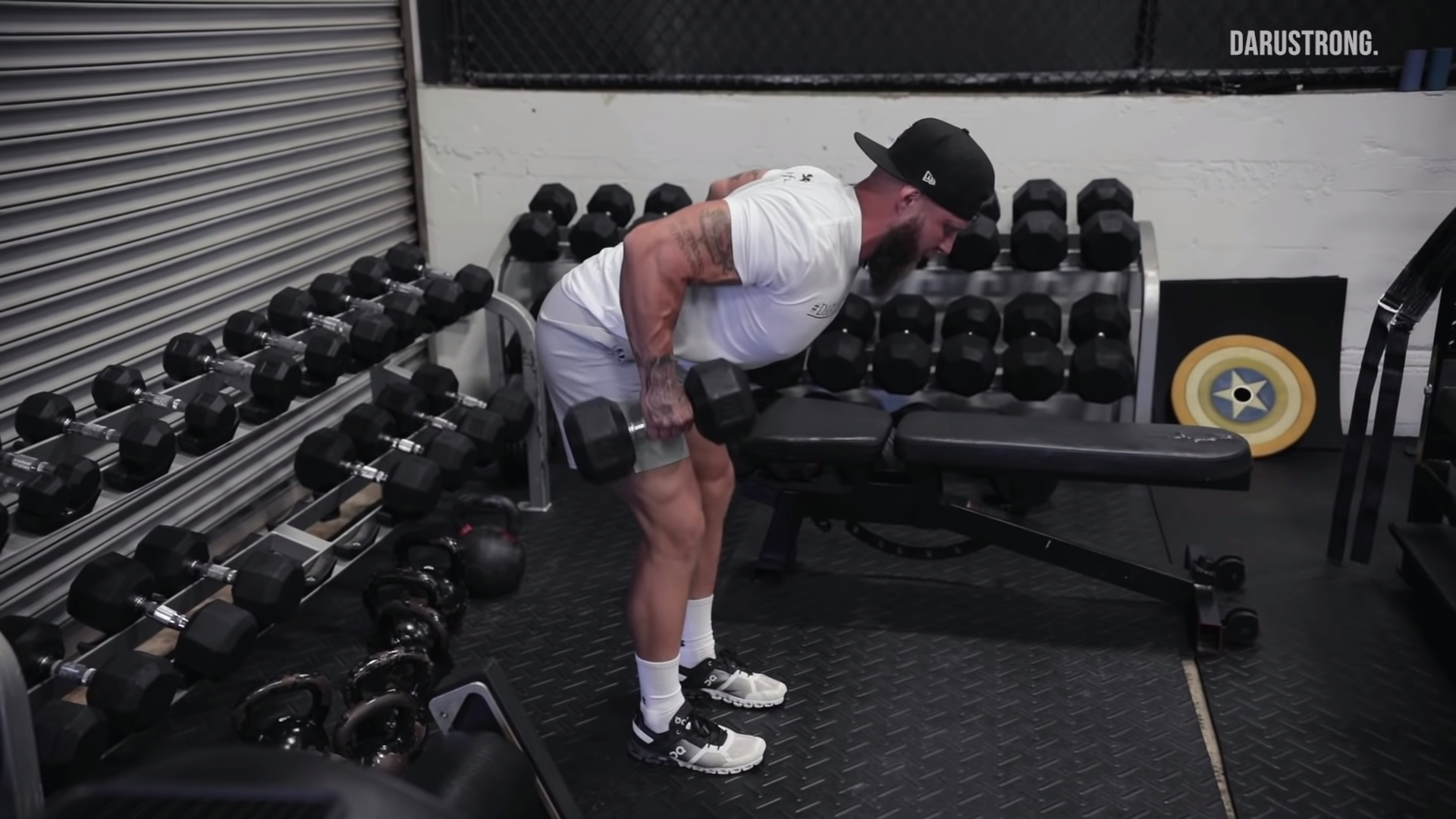
Why They’re Great For Boxing: Structure is everything for boxers. By structure, I mean joint alignment and balance in the muscles. If your muscles are imbalanced, joints misaligned, you’re going to get injured. Injury means missed time. And missed time means your competition has time to catch up to you.
The dumbbell row is an exercise you can use as a tool to hammer away at your imbalances by building the muscles of the back. Strengthening these muscles, like the rhomboids, mid traps, and more, will pull your shoulders down and back, into proper alignment. This will help you prevent injury as well as increase your punching power. How? Because you have more range of motion to generate power through.
How to Program Them: I view dumbbell rows as an accessory or auxiliary movement. This said, even though it’s a compound exercise, you should perform higher reps (6-12), and lower sets (3-4).
How to Perform Dumbbell Rows:
- Start with the dumbbells in your hands
- Hinge the hips back until the chest is parallel to the ground
- Make sure the chest is up and the chin is tucked
- Get a good stretch in the lats
- Drive the elbows past your trunk getting a good squeeze at the top
- Lower back down and repeat
#5 Band Pull Aparts
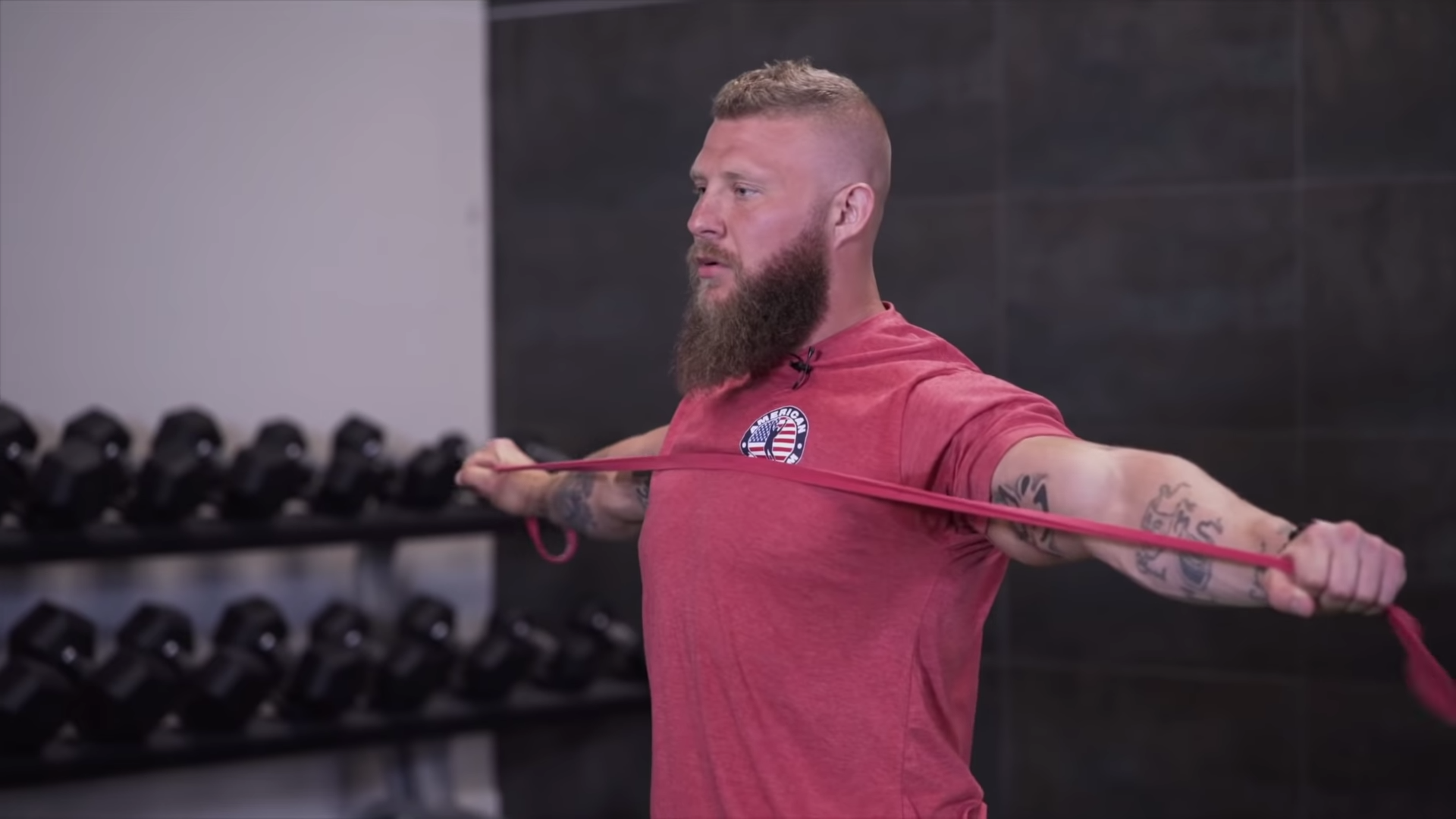
Why They’re Great for Boxing: Band pull aparts are another strength and conditioning exercise that works to hammer away at imbalance and joint misalignment. As previously mentioned, many fighters have rounded forward shoulders that compromise their structure. Band pull aparts work to bring those shoulders back into alignment by building the muscles of the mid and upper back. This, again, helps to prevent injury as well as increase punching power.
How to Program Them: Band pull aparts are a corrective exercise. I like to use high reps (10-20) in between sets of compound exercises like presses and pulls.
How to Perform Band Pull Aparts:
- Grab a resistance band with your hands at the appropriate width. The closer your hands are, the harder it will be. The farther, the easier
- Keep your chest up tall, core tight, and glutes squeezed
- Squeeze your shoulder blades together and pull the band right under your chest
- Slowly return to the starting position (add a protraction for the more advanced version)
- Repeat for desired reps
#6 Box Jumps
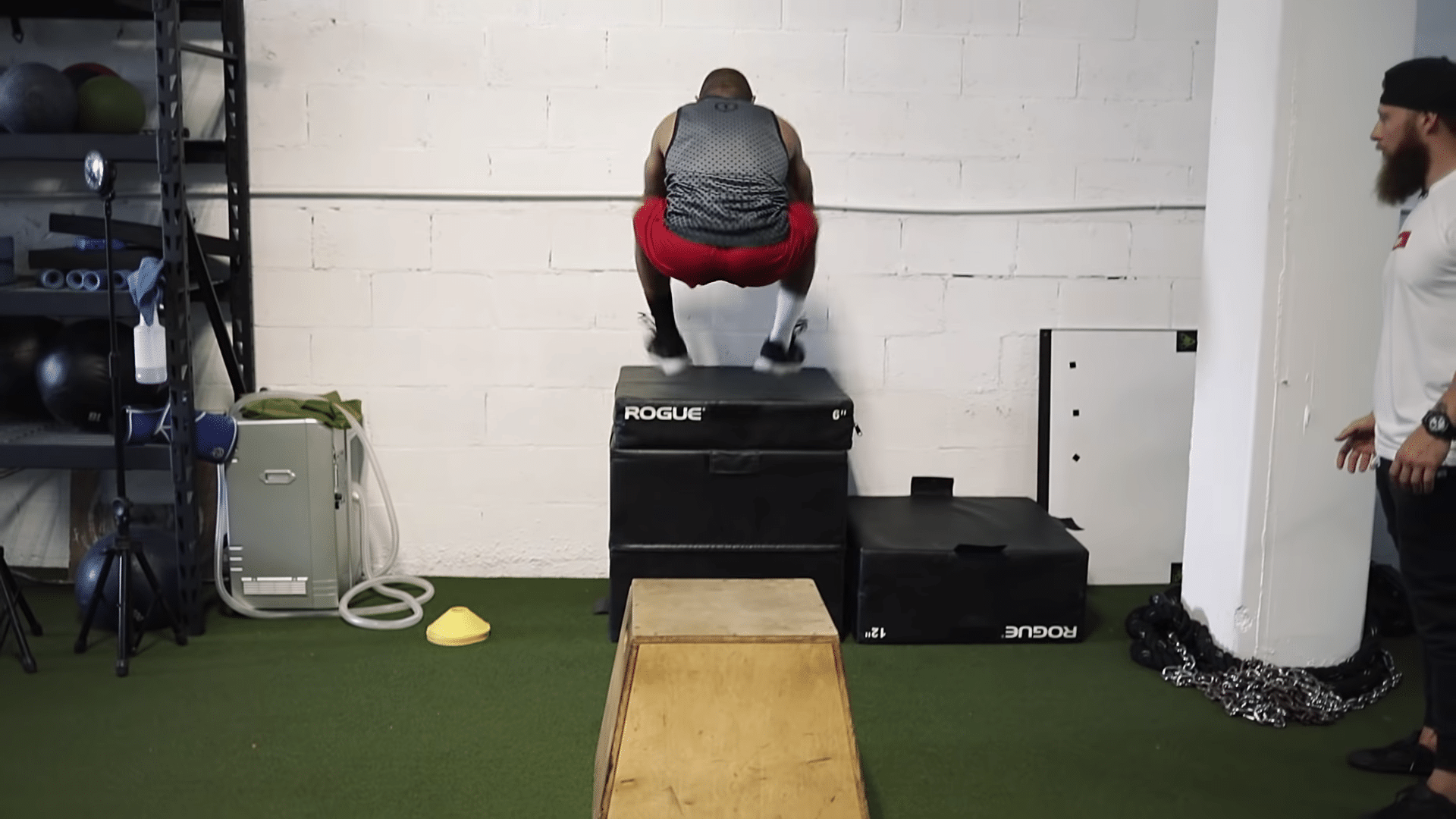
Why They’re Great for Boxing: Box jumps, and all plyometrics really, are great for boxers who want to increase their punching power and their ability to throw powerful punches throughout the duration of the fight. Why? Because box jumps develop your ability to produce force rapidly. And even though box jumps work the lower body, you’re teaching the body to transfer this force through your body and out of the upper extremities.
How to Program Them: Box jumps, like ballistic medicine ball throws, should be programmed with quality in mind. You don’t want to perform box jumps while gasping for air, barely making it up on the box. At least, not if power and boxing performance are your goals. You should perform around 6-10 sets of one rep, fully recovering in between jumps.
How to Perform Box Jumps:
- Start with the feet hip width in front of a safe, elevated surface
- Quickly push the hips back slightly and bend the knees
- Swing the arms down simultaneously
- Quickly extend the hips and jump on the box
- Land softly, absorbing force with the hips
- Step back down and repeat for desired reps
#7 Roadwork
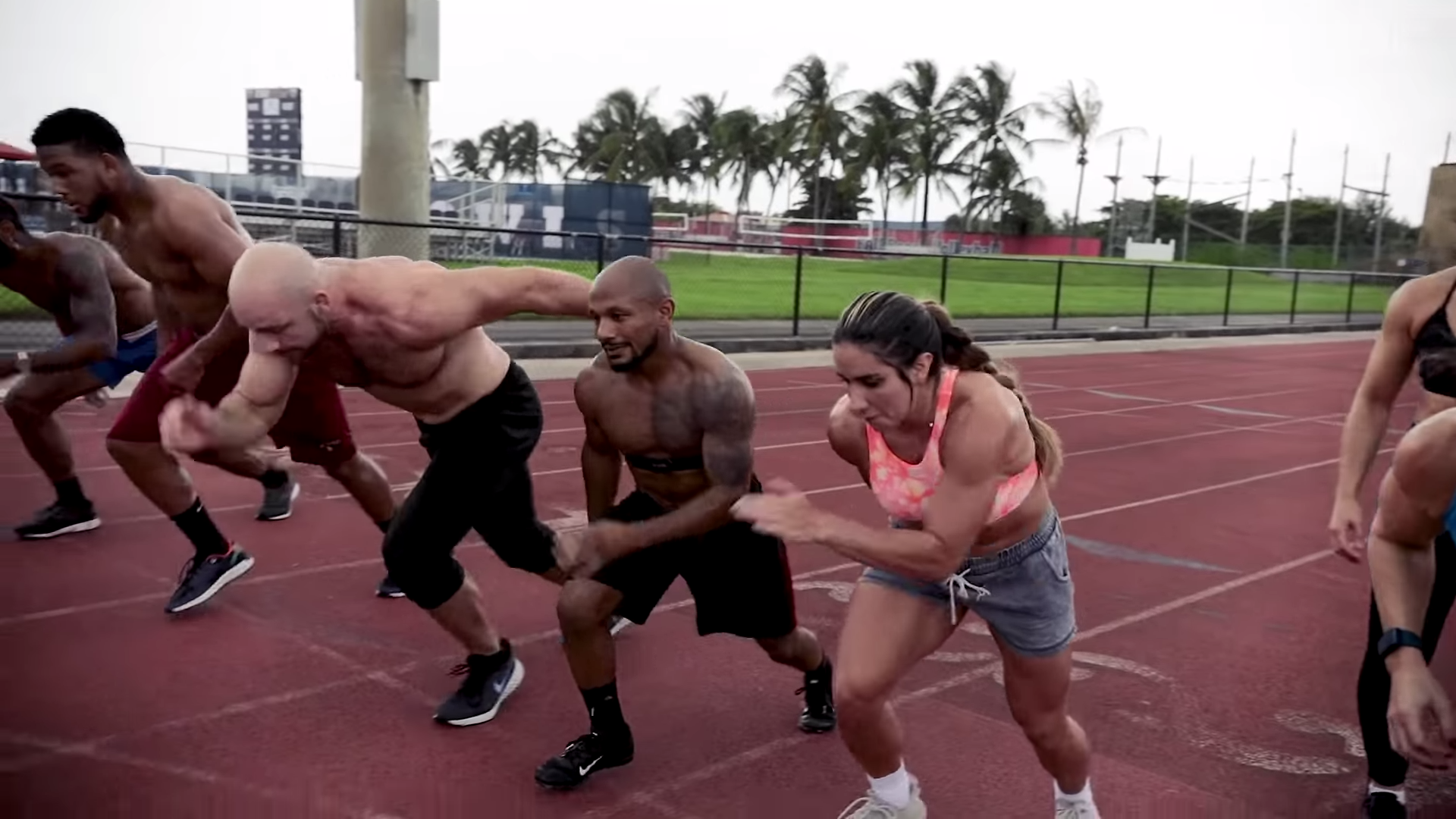
Why It’s Great for Boxing: Traditional, slow-paced, long-distance cardio is great for building a gas tank that keeps you energized for the duration of a fight. While it’s not the only aspect of endurance training that needs to be addressed, it’s still critical to your success.
How to Program It: I like to give 45 minutes of roadwork to my fighters two times a week, though this can vary depending on their endurance training needs. If you want to learn more about how to identify your endurance training needs, and see my sample endurance training schedule, check out this blog post.
How to Perform Roadwork: There are multiple modalities you can use for roadwork. The most common is jogging. However, as my fighters get closer to their fight, I like to switch to biking or swimming to minimize the wear and tear on their legs.
#8 Power Endurance Training

Why It’s Great for Boxing: Unless your plan is to one-punch-knock-out all of your opponents, you need the ability to be explosive repeatedly throughout the fight. That’s where power endurance, or anaerobic endurance, training comes in. This kind of training is simply improving your ability to be explosive over extended periods of time.
How to Program It: I program power endurance training two times a week, depending on the needs of my fighter.
How to Train for Power Endurance: The easiest way to train your power endurance is with interval training. Simply download an interval timer, and set the clock for 10 seconds on, 30 seconds off. When you’re “on”, throw as hard as you can at a heavy bag for 10 seconds. During the “rest period” throw light punches at the bag. Repeat this for up to 10 times, and you’ll see your power endurance go up.
Try My Heavy Hitter Program for Boxing Performance
Heavy Hitter is the complete boxing performance program. This program contains the EXACT methods world champion fighters use to train their bodies for a fight. Inside of the program, you’ll find the exact methods, exercises, conditioning practices, and correctives you need to become a walking fortress in the ring.
More than that, if you follow the program exactly as it’s laid out, I guarantee you increase your punching power, gas tank, and movement quality or your money back.
That means there’s no risk in trying it today.
Since your a blog reader, you can grab Heavy Hitter for a half-off discount at this link only.
Can’t wait to see you inside.

